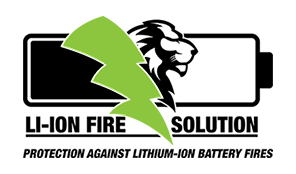
Although you may not realise it, we use lithium-ion batteries frequently in our day-to-day lives. In fact, lithium-ion batteries are found in a wide range of modern devices, including phones, tablets, laptops, computers, power banks, chargers, toys, appliances, power tools, electric toothbrushes, vaping devices, and electric bikes and scooters.
A common misconception that many people have is that these devices can be thrown out with the rest of their rubbish. However, what a lot of people do not realise is that lithium-ion batteries (and other types of batteries) can actually catch fire if they are crushed, punctured, or damaged – all of which can happen during the waste collection, transportation, and handling process. This means that lithium-ion batteries that are not disposed of properly can end up causing fires in bins, rubbish trucks, waste and recycling centres, and in landfill. In fact, around 12,000 fires are reported to be caused a year in Australia as a result of discarded lithium-ion batteries.
Dedicated drop-off containers and battery bins are starting to appear across Australia, which allow people to dispose of their lithium-ion batteries in a safe way. However, many people continue to dispose of these batteries in their regular rubbish or recycling, either because they do not know where to find a proper battery disposal bin or because they are unaware that these batteries cannot be disposed of with their regular trash. This means that fires resulting from the incorrect disposal of lithium-ion batteries continues to be a major issue for the Australian waste and recycling industry.
For this reason, responsible waste and recycling plants have dedicated emergency response plans to deal with lithium-ion battery fires should they occur on their premises or vehicles. Measures such as flame detection cameras and/or thermal cameras that provide first indication of fire in these challenging environments. Although all waste and recycling plants will usually have traditional firefighting systems on site, such as fire extinguishers, hose reels, hydrants etc, these can actually often be ineffective in extinguishing lithium-ion battery fires due to the way the battery burns, often with episodes of reignition.
Lithium-ion battery fires can be fierce and hard to extinguish, and can also give off poisonous gasses. Therefore, it is important that waste and recycling plants are prepared to act quickly, which they can do by investing in fire-fighting products that can utilise the F-500EA agent, such as Li-Ion Fire F-500EA fire extinguishers and induction systems. The F-500EA extinguishers have been third-party tested worldwide, and have been proven to successfully extinguish lithium-ion battery fires. Li-Ion Fire’s F-500 EA range offers the waste and recycling industry a fast-acting, portable, and effective solution for small to medium lithium-ion battery fires. The range offers a 4 Litre and 9 Litre portable fire extinguisher, as well as a 45 Litre and 90 Litre Mobile Fire extinguishers for more stopping power. Li-Ion Fire Solutions F-500EA meet mandatory standards for a water-type fire extinguisher, however, a standard for lithium-ion battery fires is currently under review.
With next-generation encapsulator technology and a non-corrosive multipurpose formula, Li-Ion Fire’s F-500 EA extinguisher range is an effective solution for cooling, controlling, and extinguishing lithium-ion battery fires. Find out more about how our extinguishers work and what makes Li-Ion Fire’s F-500 EA range special here Video Library – Protection Against Lithium-Ion Battery Fires (lithium-ionfireprotection.com.au)
Our F-500 EA range comes in both Portable Fire Extinguishers and Mobile Extinguishers. We also offer a range of other solutions to assist the waste and recycling industry to mitigate and respond to lithium-ion battery fires. Some of the solutions we offer include hose induction systems and CCTV fire detection cameras.
Early detection of lithium-ion battery fires, and any fire in general, is paramount in minimising fire damage and destruction. Our CCTV fire detection cameras use advanced imaging and infrared spectrum technology to ensure early fire detection and reliable monitoring. They can detect fires within seconds and will send real-time alerts, allowing you to respond quickly in the event of a fire. Our CCTV fire detection cameras use AI technology to enhance accuracy by up to 99% and reduces false alarms. The installation of specialised fire detection cameras is recommended to ensure early detection in high-risk areas like recycling plants.
We also offer hose induction systems. Our lay flat induction systems can be used to upgrade your existing hydrant system, taking them from being limited to Class A fires to allowing them to efficiently handle multiple fire classes, including Class A, B, D, F, and lithium-ion battery fires, with the addition of F-500 Encapsulator Agent. This setup can be installed as a permanent fixed system near a hydrant valve or used as a mobile kit that can be carried to any landing valve. We also offer a 25mm Hose Reel Induction System, which can be used to upgrade an existing 19mm or 25mm hose reel system to make it suitable for handling multiple fire classes, including Class A, B, F, and lithium-ion battery fires. Since 19mm hose reels are the most common type used in Australia, the 25mm induction system will usually require the installation of a new cabinet and built-in induction system.
